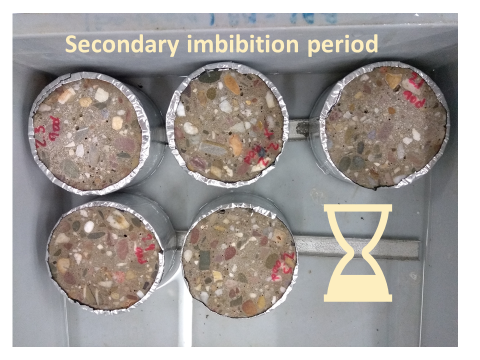Insight into the secondary imbibition rate of concrete and its relationship with curing time
DOI:
https://doi.org/10.21809/rilemtechlett.2020.122Keywords:
Secondary sorptivity, Capillary imbibition, Long-term water ingress, DurabilityAbstract
Long-term capillary imbibition in cementitious materials is relevant to describe their durable behaviour. Many structures are exposed to long-term contact with moisture, such as foundations or wastewater installations. After several weeks, when capillary rise is no longer progressing, a distinguished change in the slope (from the mass gain - fourth root of time relation) is noticed. Primary and secondary imbibition rates (PIR and SIR, respectively) can be obtained from such behaviour. Contrary to the widely investigated PIR, usually defined as the capillary absorption rate, the SIR has been scarcely examined. Data from literature of tests in concrete lasting more than 7 days is very limited. To form a better view of this process, we contrasted values of SIR and porosity (water accessible porosity under vacuum and intrudable porosity by mercury intrusion porosimetry). Moreover, we used statistical inference to evaluate the evolution of the SIR of mixes with different composition and curing age. This paper presents the effect of curing on the SIR and the relation between porosity changes and SIR. Despite the decrease in capillary porosity and intrudable porosity, SIR increases with curing time. This is probably due to a connection between SIR and the increasing C-S-H content with time.

Downloads
Published
How to Cite
Issue
Section
License
Authors retain copyright of the articles published in RILEM Technical Letters and grant the journal the right of first publication with open access. The work is simultaneously licensed under Creative Commons Attribution 4.0 International License (CC BY 4.0) that allows others to share and adapt the work under the following terms: 1) a proper attribution is given in a form of bibliographic record with the DOI link directing to RILEM Technical Letters; 2) a link to the license is provided; 3) the changes (if any) are indicated.









